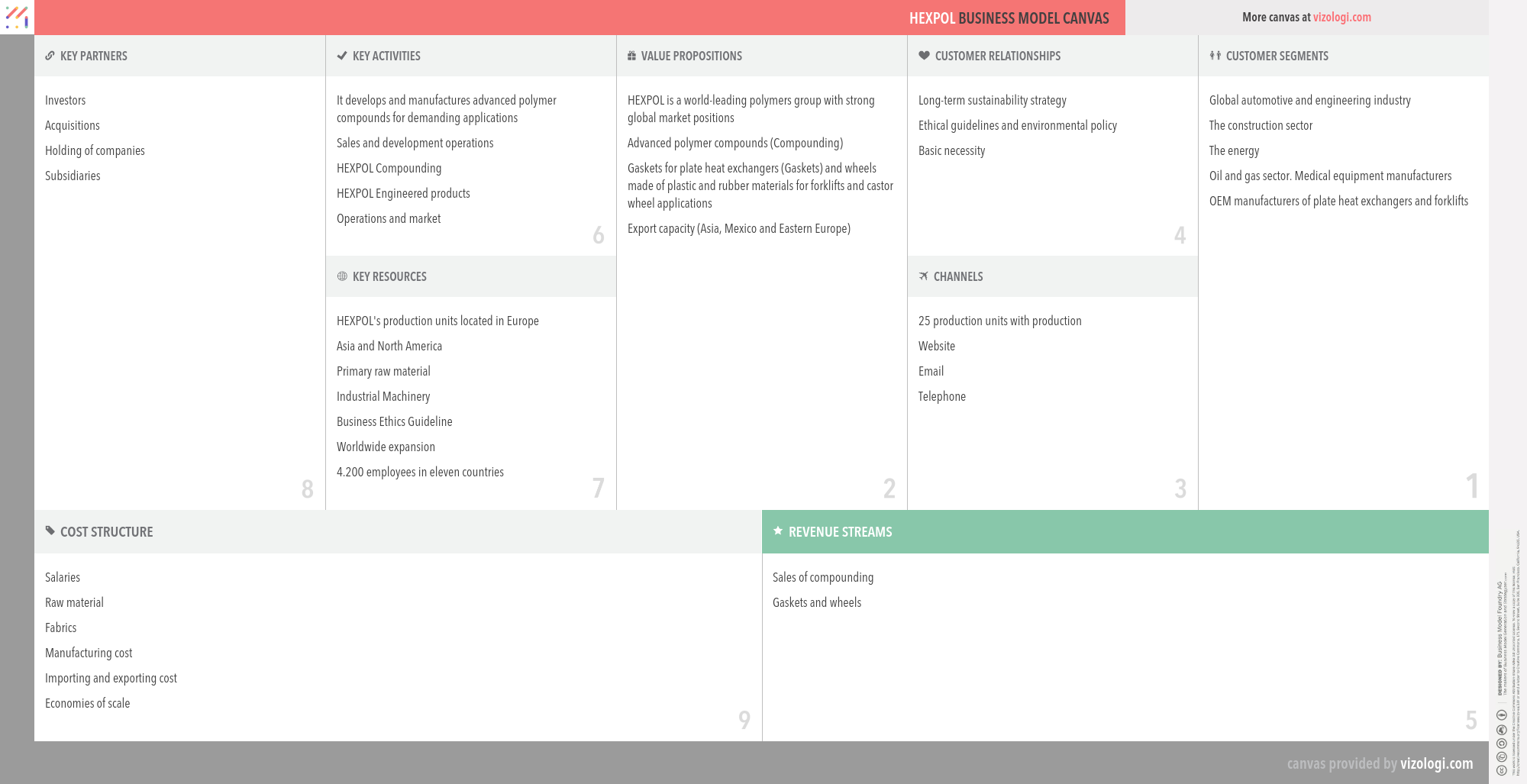Why Hexpol's Business Model is so successful?
Get all the answers 
Hexpol’s Company Overview
HEXPOL is a world-leading polymers group with strong global market positions in advanced polymer compounds (Compounding), gaskets for plate heat exchangers (Gaskets) and wheels made of plastic and rubber materials for forklifts and castor wheel applications (Wheels).
www.hexpol.comCountry: Sweden
Foundations date: 1893
Type: Public
Sector: Industrials
Categories: Materials
Hexpol’s Customer Needs
Social impact:
Life changing:
Emotional: provides access, badge value
Functional: reduces effort, reduces risk, reduces cost, saves time, avoids hassles, organizes, integrates, quality, variety
Hexpol’s Related Competitors
Hexpol’s Business Operations
Performance-based contracting:
Performance-based contracting (PBC), sometimes referred to as performance-based logistics (PBL) or performance-based acquisition, is a method for achieving quantifiable supplier performance. A PBC strategy focuses on developing strategic performance measures and the direct correlation of contract payment to success against these criteria. Availability, dependability, maintainability, supportability, and total cost of ownership are all standard criteria. This is accomplished mainly via incentive-based, long-term contracts with precise and quantifiable operational performance targets set by the client and agreed upon by contractual parties.
Guaranteed availability:
Guaranteed availability is a property of a business system that attempts to maintain an agreed-upon level of operational performance, often uptime, for a longer time than is typical. The idea is often linked with terms such as high availability and catastrophe recovery.
Make and distribute:
In this arrangement, the producer creates the product and distributes it to distributors, who oversee the goods' ongoing management in the market.
Solution provider:
A solution provider consolidates all goods and services in a particular domain into a single point of contact. As a result, the client is supplied with a unique know-how to improve efficiency and performance. As a Solution Provider, a business may avoid revenue loss by broadening the scope of the service it offers, which adds value to the product. Additionally, close client interaction enables a better understanding of the customer's habits and requirements, enhancing goods and services.
Supply chain:
A supply chain is a network of companies, people, activities, data, and resources that facilitate the movement of goods and services from supplier to consumer. The supply chain processes natural resources, raw materials, and components into a completed product supplied to the ultimate consumer. In addition, used goods may re-enter the distribution network at any point where residual value is recyclable in advanced supply chain systems. Thus, value chains are connected through supply chains.
Recommended companies based on your search:

